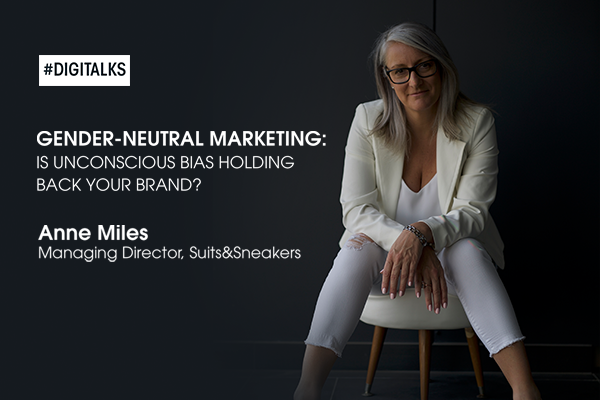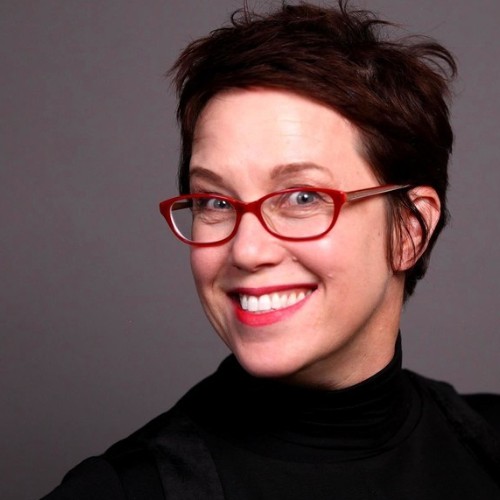A 40-year study by sociologists Joanna Pepin and David Cotter has demonstrated the number of millennials who believe that “The husband should make all the important decisions for the family” has grown from 30% in 1994 to nearly 40% in 2014. The rate of decline in some segments is improving since then, but we're still in trouble with gender rights according to this data. All the activism going on is coming to no good and potentially making things worse. In the past women were relegated to the home, and decisions that related to the home were considered their domain. This was likely from an oppressed position with those decisions considered to be inferior decisions.
Diversity Oversteer
With gender rights in full swing, we now have a situation where women are actually over-represented in the most significant purchasing decisions. This at the expense of the men. Many activists believe they've done their job in this instance, ‘You go girls!‘ but this is over-representation and is what I coin as ‘Diversity Oversteer‘.
If we objectively consider the fact that Australia's population is pretty much 50/50 male to female, then women are massively over-represented in purchasing decisions rather than it be an empowering position.

The reasons for this could also be argued that for women to gain their place of strength. Men have been depicted as irresponsible, bumbling fools and don't have to take their fair share of household duties either. Much of our marketing slips into this belittling stereotyping still, thinking we are doing right by the female gender. We also still struggle to have women adequately represented in business and often in the strive for looking ‘professional' our gender-biased businesses slip into the masculine too. Old habits die hard! On the other hand, we have childcare and cleaning products plastered with imagery of mothers, but no fathers or co-parenting anywhere to be seen either. Think about going on a date with someone. If you demand your date to like you or to give you the attention you think you deserve it is a dead certainty that you are likely to push them away and you don't actually get what you want. Activism is the same thing — we just alienate and push people away, and we make people feel uncomfortable. Even those who are likely to support you go quiet for fear of doing the wrong thing and are often made to feel terrible for putting a well-intended foot wrong too.
We also can push people into over-compensating and making tokenistic decisions. Which can then tip things the other way in even more harmful ‘Diversity Oversteer'.
Social Proof
What about the psychological phenomena of ‘Social Proof'? The more we tell the world that women are disadvantaged. For many this makes it okay to be the same as everyone else. Let's look at an Audi TVC that was celebrated for doing good for gender rights, and even a little nod to a LGBTQIA+ community here too. (I'll admit that at the time I loved it too!). What is interesting about this is to view this same ad in context of the here-and-now and how it has dated. The cause is ‘old news' and any activism in this context is seen by many to be too pushy. In fact, you could even say this ad is depicting women in a masculine way to get noticed, demanding attention, rather than celebrating authentic feminine power as equal to a man's.
Gender-neutral storytelling
Looking at masculine and feminine storytelling practices there are plenty of masculine cues appearing in that commercial and it is confusing to the masculine audience and even alienating. A lot of women don't connect with masculine storytelling nor the aggressive power-filled driving around the toy store. With masculine and feminine communication so different, no wonder we have a population of women who find marketers don't understand them. Even the work that is designed to fight their cause is actually off track and undermining the good intentions behind it.

The differences in storytelling for the masculine and the feminine* is the polar opposite. So, typically in our society, we swing from one to the other. We often think that putting a woman in the position of a man is a way to give women power and a voice where it wasn't before. That's simply just more masculine, no matter who wears the pants.

When someone's rights have been compromised for a long time and no attention has been given. Then sadly it is only through a bit of noise that it gets noticed. Focus is important, but there comes a time when it tires and is rejected. We need an alternative to make change another way. Role modeling and inclusion in a natural and unforced way will make society easy at adopting a minority or integrating the disadvantaged into the every day — their rightful place. We need to do this with gender-neutral, more inclusive, communication without activism and aggressive masculine storytelling. Let's bring a sense of humanity into our marketing without tokenism or a big fuss. Let's just be gender-neutral and set the standards and aim for a better result than we're currently getting.

Thinking about the gaming industry of the past, if we adopted the ‘activism' mode we'd have had women demanding a place in all the shoot-em-up games of the era with women simply slotting into the masculine world (well, there likely was that but my gaming experience is inadequate to name and shame here!). Nintendo shook this market up by looking at the market potential across all demographics and created a product. Therefore the marketing too, that suited a gender-neutral audience for unprecedented success. No activism insight.
I'd like to think another part of the success for Nintendo was dropping any demographic profiling and coming back to find out what ‘people' want.

There are many other cases of brands succeeding wildly, through looking at a gender-neutral market potential. At the very least it would be wise as a community to think about our broad audience profiles and work through how to communicate. Without polarising either audience, with gender-neutral communication themes and language. Simply for the fact that we generally only have one marketing budget to spend. We want it to reach the widest possible group of consumers without wastage.
Even the fiscal opportunity alone is exciting but think about the good we're doing for all genders if we can start to quietly show all as equals without polarising and alienating by yelling and demanding a fair go or tipping the balance too far the other way too.
*Author's Note: This work polarises into masculine and feminine storytelling cues. These are not necessarily always directed to the male and female gender but statistically it is the dominant situation. For the purposes of achieving gender neutrality, we align the genders and the energetic styles of the masculine and feminine. I acknowledge that we don't live in a totally binary world and recognise all genders, not just male and female.
Sources:
- Study: Cassino 2017; Pepin and Cotter; and, Kei Kawashima-Ginsberg, 2017
- Study: From Girls to Men: social attitudes to gender equality issues in Australia, Canberra University
- The New York Times “Do Millennial Men Want Stay-At-Home Wives? by Stephanie Coontz March 31, 2017. A version of this article appears in print on April 2, 2017, on Page SR7 of the New York edition with the headline: Do Millennial Men Want Stay‐at‐Home Wives?
- hbr.org/2009/09/the-female-economy www.telegraph.co.uk/women/womens-business/10783665/Womenomics-why-women- are-the-future-of-our-economy.html ^she-conomy.com/facts-on-women
- Collated checklists from Jane Cunningham & Philippa Roberts, UK Researchers and author of “Inside Her Pretty Little Head” and “The Daring Book for Boys in Business”.
Latest.

How to keep top talent: Strategies for successful onboarding
Hiring Insights, Ask Aquent, Training Resources

AI and the job search: What’s changed and how to come out on top
Technology, Job Seeker, Industry Trends

How Creative Ops Leaders are driving value in 2025 and beyond
Industry Trends, Leadership




